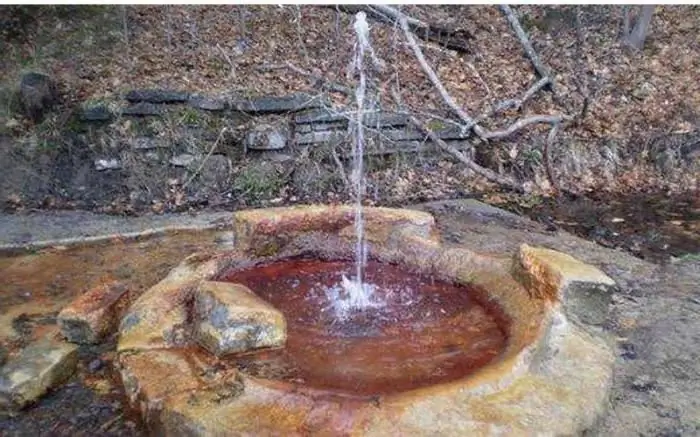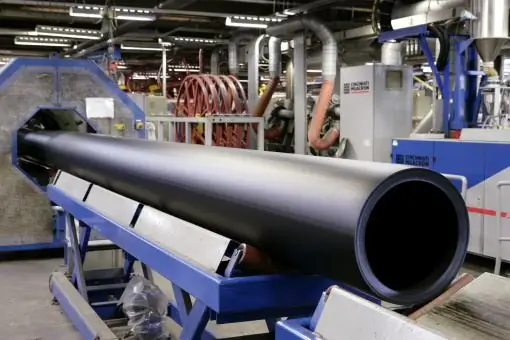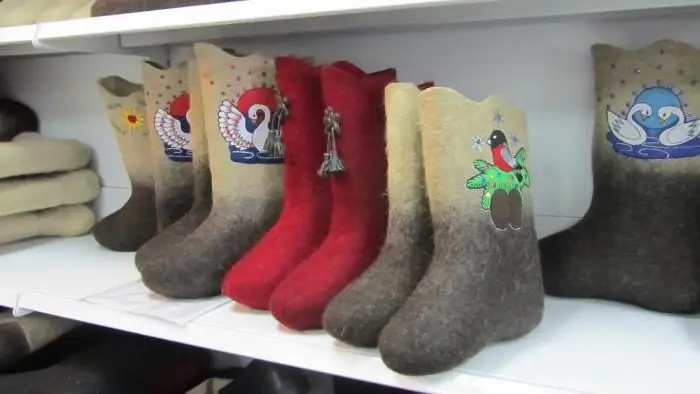2026 Author: Howard Calhoun | [email protected]. Last modified: 2025-01-24 13:10:29
The production of felt boots has remained unchanged for several hundred years. The raw material is natural wool, which shrinks heavily during the manufacturing process, resulting in the best winter shoes for frosty and dry winters.
What are felt boots
Felt boots are a type of winter footwear made from densely knitted natural wool. In the most severe frosts, they keep warm and save the legs from frostbite, and the whole body from hypothermia, even in the Far North. The material for shoes is sheep wool, which is felted (rolled). Wool processing technology goes through the stage of simultaneous steaming and shrinkage into a dense material from which the product is molded. The name of the footwear, so widespread in the past, comes from the name of the manufacturing process - felting.
Felt boots are produced in many types. The classic models are made of densely knitted thick wool with a boot of medium height. They are comfortable, lightweight and durable. They are worn during the cold season in dry weather. In autumn or in slushy winters, rubber overshoes are put on felt boots. Natural wool pretty fasttrampled, so the sole used to be often hemmed with leather. In urban conditions, felt boots were in little demand, but in the open spaces of the provinces they are still relevant.
Until recently, traditional shoes were not of interest to most of the population, they put on felt boots only for small children. Now the return of fashion to natural materials and traditional crafts has begun, which is associated with new opportunities, design finds.

History of boots
There were times when felt boots were considered a symbol of prosperity and great prosperity, and shoe sellers were heavily taxed. The production of felt boots was a secret to most mortals, and the master felters kept their secrets secret, preferring to pass them on only to family members. It is assumed that the prototype of felt boots were pims, nomads' shoes.
It is believed that felted shoes appeared at the end of the 18th century in the town of Myshkin, Yaroslavl province. Fashion for felt boots at court was introduced by Peter I, he put them on after a bath or wore them in winter. Tsarina Catherine the Great used felt boots to treat leg disease, and Elizabeth, by her decree, allowed court ladies to wear these shoes complete with puffy dresses. Stormy innovations in Russia were periodic, one of them was provoked by Peter I, who was distinguished by his breadth of views and practicality; during his reign, felt boots became available to all segments of the population.
The production of felted shoes on an industrial scale began in the 19th century. Lovers of felt boots were Lenin, Stalin, Khrushchev. During the war years, felt boots were included in the kitwinter uniforms for soldiers and senior officers. Today, mandatory equipment with traditional shoes has remained relevant for the special forces of the Ministry of Emergency Situations and the Ministry of Internal Affairs.
The production of boots today is experiencing a renaissance, they are becoming favorite objects for the application of forces and imagination of designers, which resonates with the buyer. Decorated with skillful embroidery, ribbons, natural fur, felt boots, as in ancient times, create comfortable conditions for their owner, fulfilling their main purpose - keeping warm in cold weather.

Types of wool
To make the best felt boots in Russia, sheep wool was most often used, but goat, dog, and rabbit wool was also used. Sheep wool was valued for its high wear and medicinal qualities. The wool was combed, compacted (felted) and a durable non-woven material was obtained. Further molding manipulations were carried out manually.
The final color of the product depended on the raw materials, white ones were considered the most luxurious, the wool of Mongolian fine-fleeced sheep was used for their production, gray felt boots were obtained from sheep's wool imported from Central Asia or the Caucasus. Sometimes shoes were made from camel wool, which is not inferior in quality to analogues, but felt boots from it are more fluffy and not so light.

Types of boots
Modern models are made from rabbit, sheep, goat hair, mohair and felt products are also found. Felt boots are divided into several types, depending on the materials used.and models:
- Classic padded 100% wool boots.
- Shoes with soles.
- Classic boots with welded-on rubber soles.
- Felt boots with fur. Such models are made of thin felt, insulated with several layers of batting, the inside is finished with a flannelette lining. The outsole is rubber. This is a more modern version, which was to the taste of the city dwellers, can be worn in any weather.

Technological process
Felt boots are one of the best shoes for winter cold. Production (Russia) is based on old principles that have not changed since the 19th century. The technology schematically looks like this:
- Wool obtained in rolls is torn into small fibers and dried, for this it is sent to a carding machine. The material used is not washed, which is important for compliance with the technology.
- Dried raw materials are sent to the wool carding machine for processing, where the material receives a single structure. After that, the products are cut to size. At this stage, the boots are four times larger than they should be.
- The cut parts are sent to the rolling machine, where they are subjected to steam treatment and mechanical shrinkage, after which they are boiled in hot water. At this stage, compaction occurs, the wool shrinks up to 80% of the original workpiece. Then put on the last, stretching and giving the final shape, and then dried.
- Dried shoes optionalupholstered with birch mallets to give greater density.
- In the finishing shop in classic models, the upper part of the shaft is cut off to obtain a smooth edge. But modernity has made its own adjustments, and now felt boots are embroidered with threads, beads, rhinestones. The use of felt art drawing technique, the addition of natural fur and other designer finds has become a frequent decoration.

Equipment
Today, many have opened small companies where felt boots are made. Production (Russia) was previously divided into industrial and handicraft. The equipment for a small and a large workshop needs the same, the difference is only in scale and performance. What equipment is required for the production of felt boots?
- Industrial or household card.
- Vibropress with steam supply.
- Industrial washing machine.
- Drying chamber.
- Additional equipment, if the lineup will be represented not only by the classics (semi-automatic press for rubber sole vulcanization, embroidery machine, etc.).
- Attachments: pads, beaters, etc.

Industrial and handicraft production
Industrial production of felt boots allows to produce up to 60 pairs of shoes per day, handicraft version - up to 2-3 pairs. Any factory for the production of felt boots produces not only shoes, but related products: blankets, pillows, slippers, rugs and much more.
Todayhandicrafts, including felt boots, are popular. With experienced craftsmen, they turn out to be aesthetic, with a modern model range. But no efforts of the hands can pile wool to the desired state, described in GOSTs. The factory for the production of felt boots will always provide its product with a certificate of conformity and useful tips for caring for the purchased pair.

Felted footwear factories
In the old days, whole volosts were engaged in felting, the occupation was difficult, but brought sufficient income to artels. Now in Russia such shoes are produced industrially. Factories for the production of felt boots are located in several regions, there are about fifteen of them in total, the top five are as follows:
- The largest player in this market is the Yaroslavl felted shoe factory, which produces up to 600,000 pairs of shoes a year.
- One of the oldest factories, the Kukmor Felting and Felt Plant, does not lose its positions, the annual production of felt boots here is up to 900 thousand pairs.
- Elvi-Plus company, production volume - 300 thousand pairs of boots per year.
- Omsk plant of felted shoes produces 170 thousand pairs a year.
Other enterprises produce a much smaller volume of felt boots, from 45 to 150 thousand pairs per year. Russian-made felt boots were a good alternative to foreign shoes called ugg boots. Each buyer has his own tastes, preferences and scale of values, according to which this or that product is selected. But as for boots, in comparison with foreignanalogues, in many respects this old Russian invention demonstrates the best characteristics for our latitudes.
The production of felt boots in Moscow has been established at the Bitsevskaya Factory, which has been making shoes for over 150 years. The retail network of stores is spread all over the country, and Muscovites can buy their favorite pair without leaving the capital, at the address: Stroiteley Street, Building 6, Building 4 (Universitet metro station).

How to choose felt boots
A successful pair of boots will last for years and will keep the owner warm in the most severe frosts. The choice of shoes made of felted wool is carried out according to the following principles:
- Real boots are 100% wool. The material must be dense and homogeneous in composition. If there are bald spots, thickening, lumps, then the shoes will quickly tear.
- Felt boots are not divided into right and left, they are made the same. The shape of the shoes takes on during wear. When buying a pair, make sure that both boots are the same in shape, toe height, inside and outside foot length, shaft size.
- Smell. The only smell that a felt boot can have is the smell of burnt wool, it will quickly disappear. If there is a smell of wet wool, this means a violation of the technological process, at some stage the product was poorly washed or dried, it is impossible to get rid of it.
- In a real felt boot, the sole and heel are made with a noticeable thickening, because in these places the shoes wear out faster and lose their shape. To determine -just feel it.
- Elasticity. Wool shoes should not be too soft (under-felted) or too thick. To appreciate this quality, it is enough to bend the bootleg a little, under the hands of high-quality wool it will spring a little and quickly unbend.
- Size. Felt boots can be trampled on in width, and they shrink in length, so you need to buy a pair 1-2 sizes larger. To determine what is necessary, there is a table of correspondence between the size of the foot and the felt boot.
- The most natural - felt boots made of undyed wool, even natural dyes reduce the healing qualities of sheep's wool.
Recommended:
Paving stone production: equipment, technology

The article is devoted to the production of paving stones. The equipment and technologies for the manufacture of various materials of this group are considered
Solar battery production: technology and equipment

Solar battery production technology, ways to increase efficiency, how to assemble a device at home with your own hands
Mayonnaise production: equipment and technology

Mayonnaise is a cold emulsion used as a sauce or condiment. It is made by mixing egg yolks and butter, then flavored with various combinations of vinegar, mustard, herbs and spices. Mayonnaise is often used as the base for creamy salad dressings
Production of mineral water: technology, stages, equipment

For many, the production of mineral water seems very easy. And at first glance, it may seem so. After all, nature itself took care of the quality and benefits of the product. And the entrepreneur only needs to drill a well and put on a tap so that water flows into bottles immediately. This is just a superficial knowledge of the matter
PVC pipe production: technology, raw materials and equipment

Tubular products based on polyvinyl chloride (PVC) are widely used today in a variety of areas and industries from the private sector to large oil and gas enterprises. But the process of their consolidation on the market was gradual, since the physical and technical properties of the polymer material are inferior to traditional metal counterparts in a number of criteria. However, the modern production of PVC pipes, due to the introduction of advanced technologies, has significantly increased the performance of products

